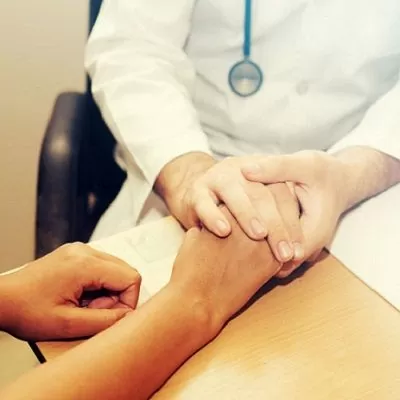Biopsy for Diagnostic Purposes: A Detailed Guide

When it comes to diagnosing medical conditions accurately, biopsy for diagnostic purposes (خزعة لأغراض التشخيص) is one of the most reliable methods available. This procedure involves the removal of a small sample of tissue or cells from the body to examine it under a microscope. Whether it’s to detect cancer, infections, or other diseases, biopsies play a crucial role in modern medicine. In this blog, we’ll explore everything you need to know about biopsy for diagnostic purposes, including its types, benefits, and what to expect during the procedure.
What Is a Biopsy?
Definition and Purpose
A biopsy is a medical procedure where a small sample of tissue or cells is taken from the body for examination. The primary purpose of a biopsy for diagnostic purposes is to identify abnormalities, such as cancer, infections, or inflammatory conditions.
Why Is It Important?
Biopsies provide definitive answers that imaging tests like X-rays or MRIs cannot. They help doctors make accurate diagnoses and create effective treatment plans.
Types of Biopsies
Needle Biopsy
-
Fine Needle Aspiration (FNA): Uses a thin needle to extract fluid or cells.
-
Core Needle Biopsy: Uses a larger needle to remove a small cylinder of tissue.
Surgical Biopsy
-
Incisional Biopsy: Removes a portion of the abnormal tissue.
-
Excisional Biopsy: Removes the entire abnormal area or lump.
Endoscopic Biopsy
Performed using an endoscope to collect tissue samples from internal organs like the stomach or lungs.
Skin Biopsy
-
Shave Biopsy: Removes the top layer of skin.
-
Punch Biopsy: Takes a deeper sample of skin tissue.
Why Is a Biopsy Recommended?
Detecting Cancer
A biopsy is often used to confirm the presence of cancerous cells and determine their type and stage.
Diagnosing Infections
It helps identify infections caused by bacteria, viruses, or fungi.
Evaluating Inflammatory Conditions
Biopsies can diagnose autoimmune diseases or chronic inflammation.
Monitoring Treatment Progress
Doctors may use biopsies to assess how well a treatment is working.
How Is a Biopsy Performed?
Preparation
-
Patients may need to avoid eating or drinking before the procedure.
-
Inform your doctor about any medications or allergies.
During the Procedure
-
Local or general anesthesia is used to minimize discomfort.
-
The sample is collected using a needle, scalpel, or endoscope.
Post-Procedure Care
-
Mild pain or swelling may occur at the biopsy site.
-
Follow your doctor’s instructions for wound care and activity restrictions.
Benefits of a Biopsy
Accurate Diagnosis
Biopsies provide precise information about the condition of the tissue or cells.
Early Detection
Early diagnosis through a biopsy can lead to timely treatment and better outcomes.
Minimally Invasive Options
Many biopsy techniques are minimally invasive, reducing recovery time.
Risks and Limitations
Potential Risks
-
Bleeding, infection, or bruising at the biopsy site.
-
Rare complications like damage to nearby organs.
Limitations
-
False negatives can occur if the sample doesn’t include abnormal cells.
-
Some biopsies may require multiple attempts for accurate results.
What Happens After the Biopsy?
Laboratory Analysis
The sample is sent to a lab, where pathologists examine it under a microscope.
Receiving Results
Results are typically available within a few days to a week. Your doctor will explain the findings and discuss the next steps.
Follow-Up
Depending on the results, further tests or treatments may be recommended.
FAQs About Biopsy for Diagnostic Purposes
1. Is a biopsy painful?
Most biopsies are performed under local anesthesia, so discomfort is minimal. Some patients may experience mild pain or soreness afterward.
2. How long does it take to recover from a biopsy?
Recovery time varies depending on the type of biopsy. Minimally invasive procedures may require only a day or two, while surgical biopsies may take longer.
3. Are there any alternatives to a biopsy?
While imaging tests can provide clues, a biopsy is often necessary for a definitive diagnosis.
4. Can a biopsy spread cancer?
The risk of spreading cancer during a biopsy is extremely low. Doctors use precise techniques to minimize this risk.
Conclusion
A biopsy for diagnostic purposes is a vital tool in modern medicine, offering accurate and reliable results for diagnosing various conditions. Whether it’s detecting cancer, identifying infections, or monitoring treatment progress, biopsies provide invaluable insights that guide effective medical care. By understanding the types, benefits, and process of a biopsy, patients can approach the procedure with confidence and clarity. If you have any concerns or questions, always consult your healthcare provider for personalized advice.
- Art
- Causes
- Crafts
- Dance
- Drinks
- Film
- Fitness
- Food
- Games
- Gardening
- Health
- Home
- Literature
- Music
- Networking
- Other
- Party
- Religion
- Shopping
- Sports
- Theater
- Wellness


